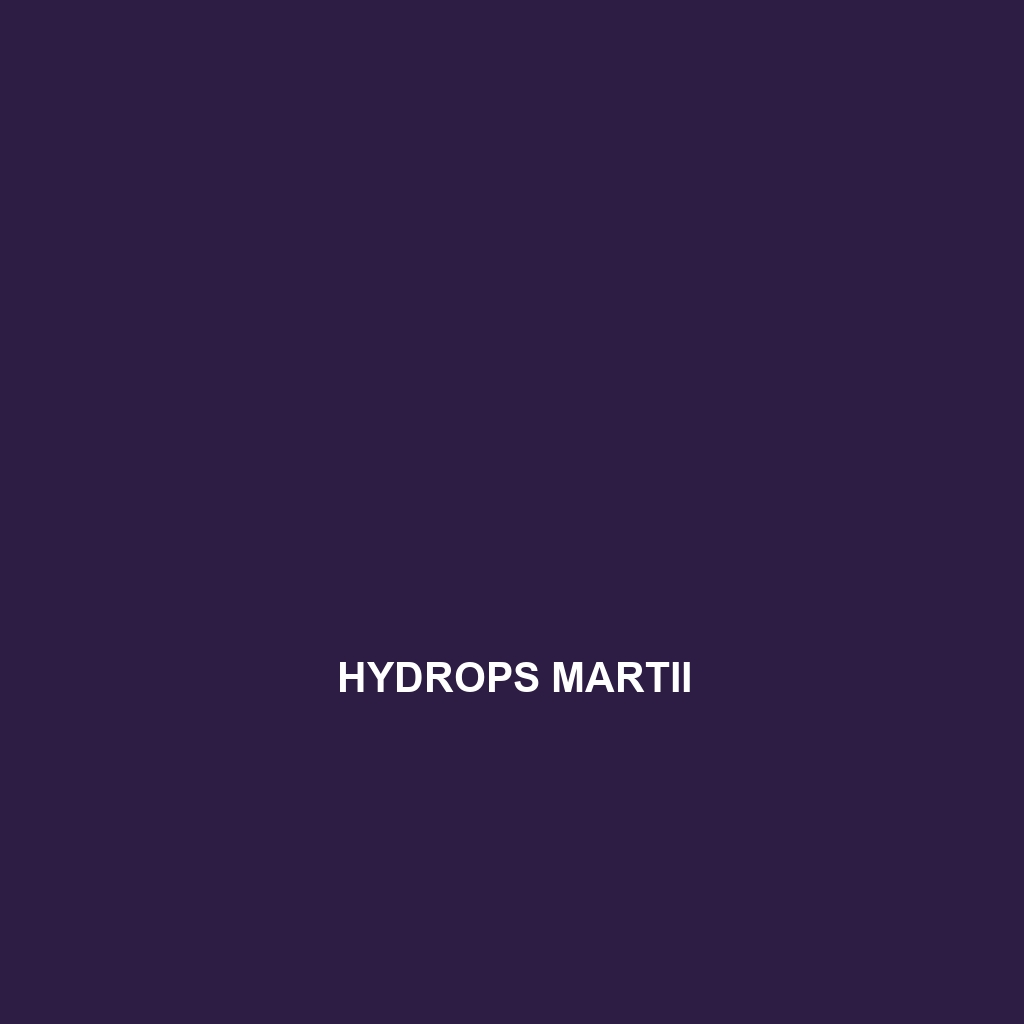Common Name
Hydrops martii
Scientific Name
Hydrops martii
Habitat
Hydrops martii, commonly known as the Martius’ Water Snake, primarily inhabits various freshwater ecosystems across South America. This species is predominantly found in regions bounded by the Amazon Rainforest and the surrounding areas of temperate forests. The habitats can range from slow-moving rivers, lakes, and streams to marshy regions and wetlands, providing the ideal environmental conditions for their survival. The warm, humid climate of rainforests favors this semi-aquatic species, allowing it to thrive in environments where vegetation is lush and water is abundant. Typically, you can find Hydrops martii basking on riverbanks or hidden in the dense foliage near bodies of water, taking advantage of both its aquatic and terrestrial surroundings.
Physical Characteristics
Hydrops martii is known for its striking physical features that set it apart from other members of the serpent family. Adult snakes can reach lengths of approximately 60 to 120 centimeters. Their bodies are slender and elongated, typically displaying a beautiful shade of olive green or brown with darker patterns, which provide excellent camouflage in their natural habitat. The ventral side is generally lighter, ranging from yellow to white. Unique to this species is its large, expressive eyes, adapted for good vision in murky water, as well as a flattened head that aids in catching prey efficiently. These physical attributes not only contribute to their aesthetic appeal but also enhance their survival skills in diverse environments.
Behavior
The behavior of Hydrops martii is quite fascinating, particularly its adaptability to its aquatic surroundings. This species is predominantly nocturnal, which means they are most active during the night. This behavior minimizes competition with diurnal species for food and reduces the risk of predation. During mating seasons, which typically occur in warmer months, males engage in elaborate courtship displays characterized by rhythmic movements and gentle nuzzling to attract females. Hydrops martii is also known to exhibit solitary behaviors outside the breeding period, often hunting alone and maintaining a territory within its habitat.
Diet
Hydrops martii is classified as a carnivore, primarily feeding on a diet of fish, amphibians, and small invertebrates. Their hunting strategy includes ambushing prey near the water’s edge or striking swiftly from beneath the water’s surface. This dietary pattern is crucial as it helps regulate aquatic populations and supports the ecological balance in their habitat. The ability to catch fish with precision highlights their role as effective predators in the ecosystem, showcasing their adaptability and proficiency in exploiting food resources available in freshwater environments.
Reproduction
The reproductive cycle of Hydrops martii includes fascinating rituals and adaptations to ensure the survival of the species. Mating typically occurs during the warmer months, with females laying between 10 to 20 eggs in secluded, moist areas near water bodies. The gestation period lasts for approximately 60 to 90 days, after which the hatchlings emerge fully equipped to survive in their environment. Hydrops martii exhibits some level of parental care, as mothers may stay close to the nesting site to protect the eggs from potential predators. This reproductive strategy ensures higher survival rates for the young snakes, allowing them to thrive in competitive ecosystems.
Conservation Status
As of now, Hydrops martii is classified as Least Concern according to the International Union for Conservation of Nature (IUCN). However, its populations are threatened by habitat destruction due to deforestation and pollution of freshwater ecosystems. Conservation efforts are ongoing to monitor populations and protect their habitats. Local initiatives aimed at wetland restoration and legal protection of critical habitats are essential in safeguarding this unique species against further threats.
Interesting Facts
One of the remarkable traits of Hydrops martii is its ability to remain submerged for extended periods without surfacing for air, an adaptation that helps in ambushing prey and evading predators. Additionally, this species displays a unique response to seasonal changes, often migrating to deeper waters during dry seasons to find food and avoid competition. Such behavioral adaptations ensure the persistence of Hydrops martii within changing environmental conditions, making it a resilient member of its ecological community.
Role in Ecosystem
Hydrops martii plays a vital role in its ecosystem as a predator, helping to maintain the balance of aquatic life. Its presence regulates fish populations, which can help prevent overgrazing of aquatic plants, promoting biodiversity. Additionally, as an indicator species, the health of Hydrops martii populations can reflect the overall state of freshwater ecosystems, acting as a barometer for environmental changes. By controlling prey populations and contributing to the food web, this snake is integral to the health of its habitat and the biodiversity it supports.
